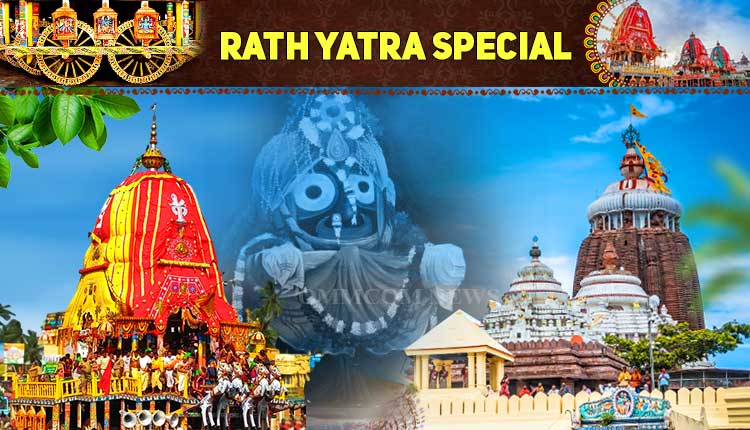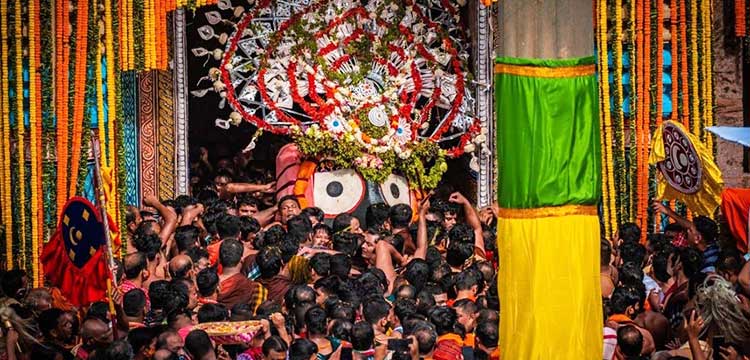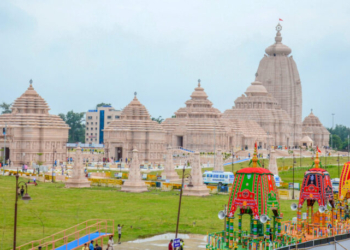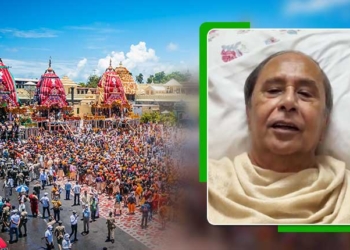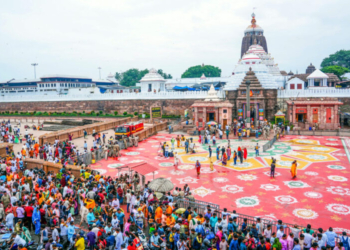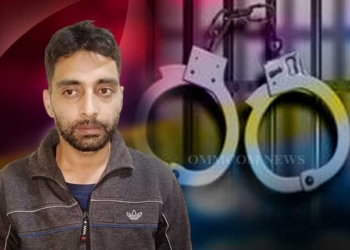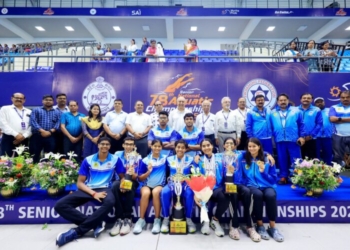The Rath Yatra in Puri is undoubtedly a spectacle of vibrant colours, spiritual fervour, and cultural richness. It is more than just a festival – it’s an experience that transcends geographical boundaries.
And when it comes to Jagannath’s chariot, Nandighosh Rath stands as a majestic symbol of the Rath Yatra festival in Puri. This sacred chariot is intricately designed and holds great spiritual significance as it carries Lord Jagannath from the Jagannath Temple to the Gundicha Temple. With the Sarathi guiding it, the Nandighosh Rath embodies the rich cultural and religious heritage of the region, showcasing a legacy that has been preserved through the ages. Its grandeur and beauty make it a central part of this ancient tradition.
Rath Yatra celebrates the journey of Lord Jagannath and his siblings, Lord Balabhadra and Devi Subhadra, from the Jagannath Temple to the Gundicha Temple. While the deities are the main focus, the Nandighosh Rath, with its intricate design and spiritual significance, holds a special place in the hearts of devotees.
The Nandighosh Rath is more than just a chariot; it’s a representation of the rich cultural and religious heritage of the region. With its stunning design and majestic presence, the chariot is a testament to the enduring legacy of the Rath Yatra festival.
As Rath Yatra commences today, Ommcom News takes you on a journey to discover the fascinating facts and legends surrounding the Nandighosh Rath, Lord Jagannath’s majestic chariot.
Legend
The Nandighosa chariot’s origins date back to the Treta Yuga, when Lord Rama, the embodiment of Lord Vishnu, was engaged in a fierce battle with Ravana. As the story goes, Lord Indra, the king of the gods, gifted Lord Rama a chariot to aid him in the battle. However, the chariot proved ineffective against Ravana’s might. It was then that Lord Shiva intervened, sending his trusty vehicle (bahana), Nandi, to assist Lord Rama.
As none had the power to bear Nandi, he was placed on the Sudarshana Chakra of Lord Vishnu. The two great powers combined, and as the Sudarshana Chakra rotated with Nandi on it, Nandi let out a mighty roar. Due to that roar, a significant portion of Ravana’s army lost their lives, paving the way for Lord Rama’s victory. Hence, the chariot gifted by Indra came to be known as Nandighosha.
The Majesty of Nandighosh Rath
The Nandighosh Rath, the majestic chariot of Lord Jagannath, stands at an impressive height of 13.5 meters. This grand vehicle is equipped with 16 wheels, symbolizing the 16 aspects of human life. Daruka, the skilled charioteer, guides the chariot, which is drawn by four white wooden horses named Sankha, Balahaka, Sweta, and Haridaswa. The chariot is adorned with vibrant red and yellow clothings, adding to its majestic presence.
The Sankhachuda rope plays a crucial role in the Rath Yatra, as devotees pull the chariot with great fervour. Interestingly, the order of the chariots’ movement varies at different stages of the journey. When the chariots are dragged from the temple to the Lion’s Gate, Lord Jagannath’s chariot leads the way. However, on the Grand Road, Lord Balabhadra’s chariot takes the lead. At the Gundicha Temple, before the return journey, Devi Subhadra’s chariot is taken out first. As the chariots roll on the Grand Road, people from all walks of life come together, forgetting their differences, to pull the chariot ropes and seek blessings.
Nandighosh At A Glance
Name: Nandighosha Rath
Other Names: Garudadhwaja and Kapidhwaja
Height: 45.6 Feet
Wheels: 16
Face: Nandi Mukha
Weapons: Sankha & Chakra
Colours: Red and Yellow
Wood: 832 Pieces
Guard: Garuda
Charioteer: Daruka
Flag name: Trailokyamohini
Horse Names: Shankha, Balahaka, Shveta, Hardashva
Rope Name: Shankhachuda, Varaha, Govardhana, Krushna
Presiding Deities: Gopi-Krushna, Nursigha, Rama, Narayana, Trivikrama, Hanuman and Rudra.



